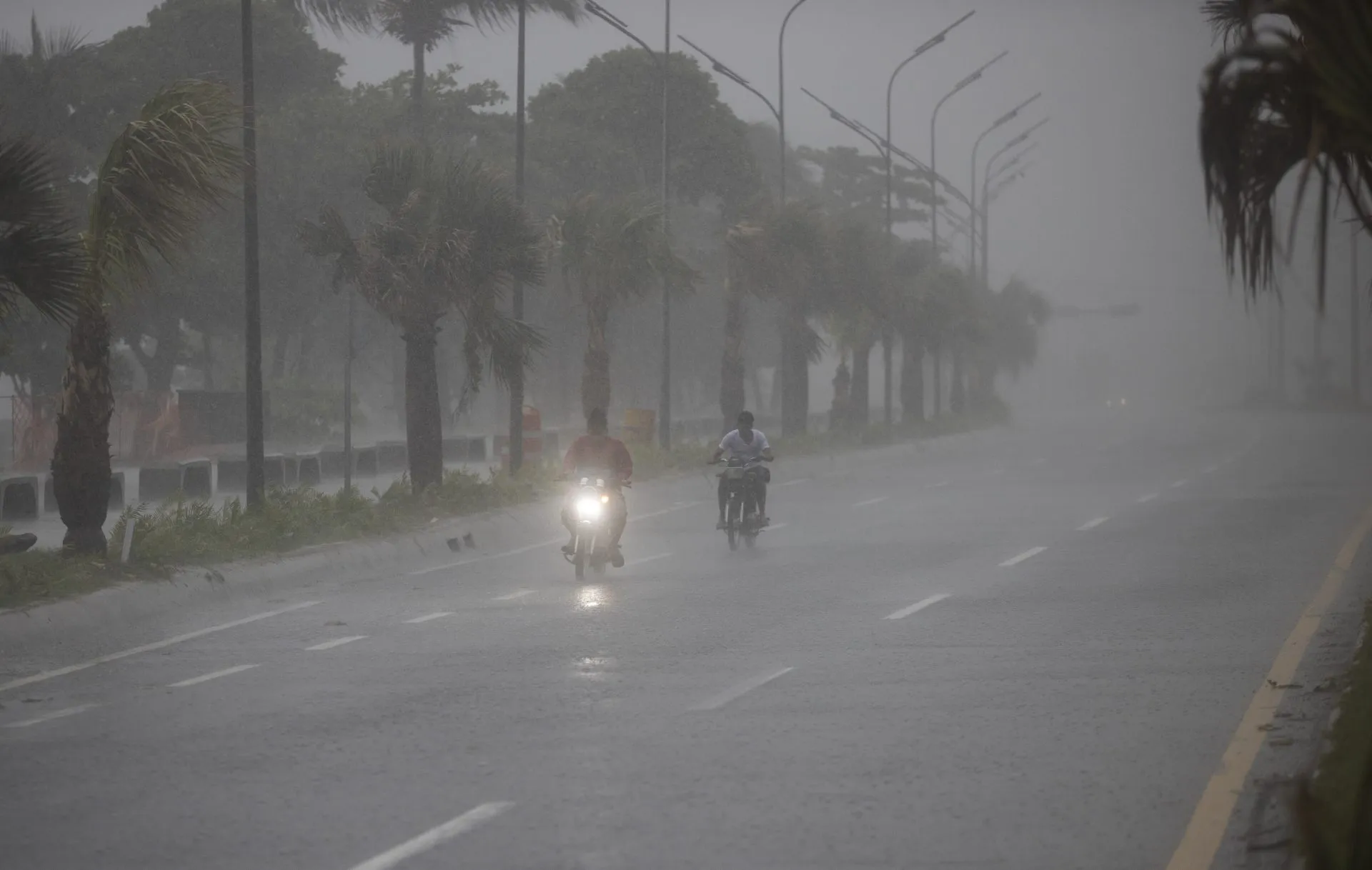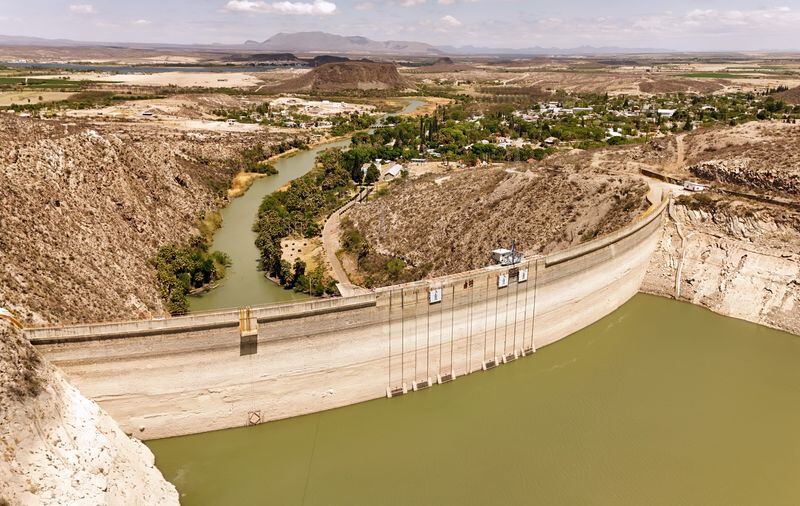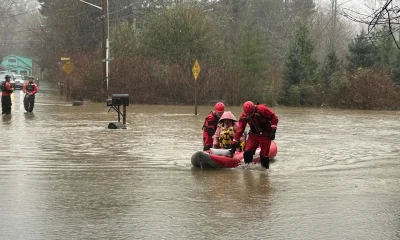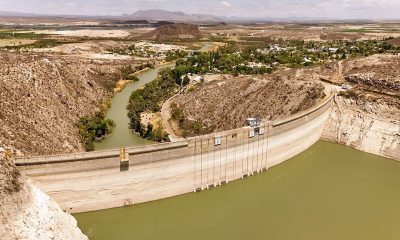International
More hurricanes and more powerful and faster threaten the Atlantic this 2024

With one day left before the official start of a new season of expert hurricanes in the United States and authorities asked the population this Friday to be prepared for the increasingly powerful and frequent cyclones, which hit vulnerable areas of the Caribbean and the Gulf of Mexico with special virulence.
The National Office of Oceanic and Atmospheric Administration (NOAA) of the United States, has predicted for this year in the Atlantic an active and above-average season, with between 17 and 25 named storms and 8 to 13 hurricanes, of them between 4 and 7 of the higher category.
However, and as the director of the U.S. National Hurricane Center, Michael Brennan, said this Friday at a press conference, there is no need for a major hurricane to generate devastating impacts and gave as an example the floods caused by the rains that carry the cyclones, which in the last ten years have been “the deadliest danger.”
“They have been responsible for more than half of the deaths” and it is almost unrelated to the strength of a cyclone, Brennan stressed. “It doesn’t matter the category, or if it’s a tropical storm or depression. What matters is how much it rains and how heavy the rains are in a certain location,” he said.
The director said that other water-related hazards, such as hurricane tide or hangover currents, are responsible for between 85 and 90% of the deaths left by each storm or hurricane that hits the United States.
Cyclones are not only more powerful and intensify faster, but also, as recent studies reveal, this “rapid intensification occurs more and more frequently the closer they get to the ground,” said today the chief scientist of the organization The Nature Conservancy, Katharine Hayhoe.
During a teleconference, the expert stressed that at present, cyclones carry “much more water vapor” than 50 or 100 years ago, and also their weakening process, even when they are already on land and far from their source of power (the hot waters of the ocean), is slower and therefore impact more.
Hayhoe said that to measure the degree of disaster that a hurricane or storm can generate, it is necessary to take into account the latent danger as well as the level of exposure, that is, the number of structures and people that can be left at the mercy of the cyclones.
And a third element is vulnerability, which has to do with how prepared and resistant the populations are, a component that is reflected with the different impacts that in 2016 caused the powerful Hurricane Matthew in Haiti, where it unleashed an outbreak of cholera, and in the Carolinas, states of the United States.
The deputy director of the organization’s Caribbean program, Shenique Albury-Smith, recalled this Friday that Hurricane Dorian of 2019, which reached category 5 on the Saffir-Simpson scale (the maximum), has been the most powerful that has impacted the Bahamas, where 70 people died and generated losses of more than 3.4 billion dollars.
“People lost houses, cars, boats, businesses; assets that took them a lifetime to build and that were basically lost in a day, in a few hours,” said Albury-Smith, who also highlighted the psychological impacts that that hurricane unleashed on the affected populations.
“Hurricanes provide a very strong footprint of how human activity, specifically greenhouse gas emissions, are overloading our extreme climates, making them much more dangerous in a world that is getting hot,” Hayhoe said.
The scientist was questioned about the recent law signed by the governor of Florida, Republican Ron DeSantis, which eliminates most of the references to the climate crisis from state legislation and even ceases to be one of the priorities of the Government’s agenda.
“I can say that I don’t believe in gravity, but the truth is that if I jump from the precipice I will fall,” said the expert.
He added that not reacting to the information provided by science is an option. “But it is an option that increases our vulnerability instead of reducing it,” he stressed.
International
U.S. and Mexico Reach Deal to Address Water Deficit Under 1944 Treaty

The United States and Mexico have reached an agreement to comply with current water obligations affecting U.S. farmers and ranchers and for Mexico to cover its water deficit to Texas under the 1944 Water Treaty, the U.S. Department of Agriculture said in a statement.
The department уточified that the agreement applies to both the current cycle and the water deficit from the previous cycle.
On Monday, U.S. President Donald Trump accused Mexico of failing to comply with the water-sharing treaty between the two countries, which requires the United States to deliver 1.85 billion cubic meters of water from the Colorado River, while Mexico must supply 432 million cubic meters from the Rio Grande.
Mexico is behind on its commitments. According to Washington, the country has accumulated a deficit of more than one billion cubic meters of water over the past five years.
“This violation is severely harming our beautiful crops and our livestock in Texas,” Trump wrote on Monday.
The Department of Agriculture said on Friday that Mexico had agreed to supply 250 million cubic meters of water starting next week and to work toward closing the shortfall.
Agriculture Secretary Brooke Rollins, quoted in the statement, said Mexico delivered more water in a single year than it had over the previous four years combined.
Trump has said that if Mexico continues to fall short of its obligations, the United States reserves the right to impose 5% tariffs on imported Mexican products.
Mexico’s Deputy Foreign Minister for North America, Roberto Velasco, said that a severe drought in 2022 and 2023prevented the country from meeting its commitments.
International
Several people shot in attack on Brown University campus

Several people were shot on Saturday in an attack on the campus of Brown University, in the northeastern United States, local police reported.
“Shelter in place and avoid the area until further notice,” the Providence Police Department urged in a post on X. Brown University is located in Providence, the capital of the state of Rhode Island.
U.S. President Donald Trump said on his social media platform Truth Social that he had been briefed on the situation and that the FBI was on the scene.
At 5:52 p.m. local time (11:52 p.m. GMT), Brown University said the situation was still “ongoing” and instructed students to remain sheltered until further notice.
After initially stating that the suspect had been taken into custody, Trump later posted a second message clarifying that local police had walked back that information. “The suspect has NOT been apprehended,” the U.S. president said.
International
Colombia says it would not reject Maduro asylum request as regional tensions escalate

The Colombian government stated on Thursday that it would have no reason to reject a potential asylum request from Venezuelan President Nicolás Maduro should he leave office, as regional tensions persist over the deployment of U.S. military forces in the Caribbean since August.
“In the current climate of tension, negotiations are necessary, and if the United States demands a transition or political change, that is something to be assessed. If such a transition results in him (Maduro) needing to live elsewhere or seek protection, Colombia would have no reason to deny it,” said Colombian Foreign Minister Rosa Villavicencio in an interview with Caracol Radio.
However, Villavicencio noted that it is unlikely Maduro would choose Colombia as a refuge. “I believe he would opt for someplace more distant and calmer,” she added.
Colombian President Gustavo Petro also commented on Venezuela’s situation on Wednesday, arguing that the country needs a “democratic revolution” rather than “inefficient repression.” His remarks followed the recent detention and passport cancellation of Cardinal Baltazar Porras at the Caracas airport.
“The Maduro government must understand that responding to external aggression requires more than military preparations; it requires a democratic revolution. A country is defended with more democracy, not more inefficient repression,” Petro wrote on X (formerly Twitter), in a rare public criticism of the Venezuelan leader.
Petro also called for a general amnesty for political opponents and reiterated his call for forming a broad transitional government to address Venezuela’s prolonged crisis.
Since September, U.S. military forces have destroyed more than 20 vessels allegedly carrying drugs in Caribbean and Pacific waters near Venezuela and Colombia, resulting in over 80 deaths.
U.S. President Donald Trump has repeatedly warned that attacks “inside Venezuela” will begin “soon,” while Maduro has urged Venezuelans to prepare for what he describes as an impending external aggression.
-

 International4 days ago
International4 days agoMexico City prepares for 13 million pilgrims at Basilica of Guadalupe
-

 International3 days ago
International3 days agoWashington declares State of Emergency as atmospheric river brings severe flooding
-

 International3 days ago
International3 days agoU.S. to require five-year social media history from tourists under Visa Waiver Program
-

 Central America4 days ago
Central America4 days agoHonduras’ electoral chief reports ongoing technical issues but says results remain intact
-

 Central America4 days ago
Central America4 days agoU.S. accuses Ortega regime of systematic human rights abuses in Nicaragua
-

 Central America4 days ago
Central America4 days agoU.S. finds no evidence of fraud in Honduras election despite delays
-

 International2 days ago
International2 days agoCuba battles out-of-control dengue and chikungunya epidemic as death toll rises to 44
-

 Central America3 days ago
Central America3 days agoOAS and EU urge honduran political actors to respect vote results and avoid unrest
-

 Central America2 days ago
Central America2 days agoHonduras election crisis deepens as CNE president denounces intimidation attempts
-

 International2 days ago
International2 days agoColombia says it would not reject Maduro asylum request as regional tensions escalate
-

 International21 hours ago
International21 hours agoSeveral people shot in attack on Brown University campus
-

 International2 days ago
International2 days agoEcuador on track for record violence as homicides hit highest level in Latin America again
-

 International3 days ago
International3 days agoSix ecuadorian soldiers jailed pending trial for alleged extrajudicial execution
-

 International18 hours ago
International18 hours agoU.S. and Mexico Reach Deal to Address Water Deficit Under 1944 Treaty


























